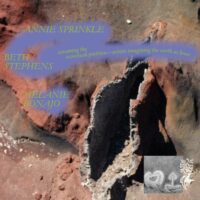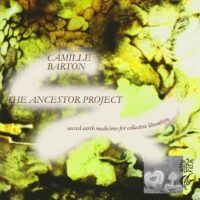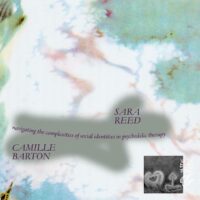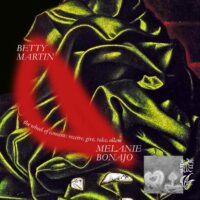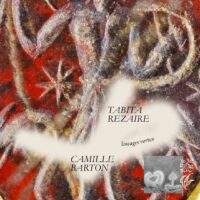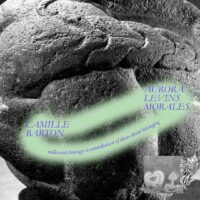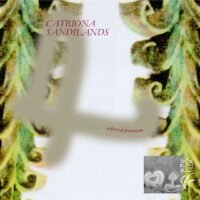We begin this fourth and final cycle of Wxtch Craft by invoking a joyfully militant image: two figures carrying an abundance of gifts and dancing between four magic wands that seem to bless a fertile ground. Symbolizing the power of community and erotic communion, this Tarot card establishes a necessary terrestrial stability for bodies to tap into lifetimes of body wisdom and sensuously perceive a more-than-human world. The eyes, the skin, the tongue, ears, and nostrils—all are gates where our body receives the nourishment of otherness.1
Spring Cycle of Wxtch Craft - Studium Generale lecture series 2021-22:
Curatorial statement
This cycle, that dreams of queer and crip more-than-human Sex Magick, is an open invitation to become incredibly sensitive and sensual to an essentially queer universe. It is about cultivating certain skill - available to all genders but also to men - that works as an anti-dote and earth medicine for this encapsulating, desensitizing modern world.
Only by temporarily shedding the accepted perceptual logic of their culture can the sorcerer hope to enter into relation with other species on their own terms; only by altering the common organization of their senses will they be able to enter into a rapport with the multiple nonhuman sensibilities that animate the local landscape.2
This attunement is the necessary groundwork for also this program to shapeshift next academic year, when it will metamorphose into a new form while remaining true to its ethics and politics, spirit unchanged.
The program will shapeshift because, sadly, shallow and fixed representation of the witch continue to prevail, derailing our attention with what we would call ‘bad faith distractions’. Dismissing the contemporary revival of the witch as just some new woo woo manifestation of angst-fueled, crystal-gazing consumer-capitalism is once again diverting our precious attention from the deep and rigorous system critique that the prismatic Wxtch is speaking to. Happily, our transformative path is paved with awareness expanding and bodymind altering flowers, for those who bother to look, sensuously and sensitively.
Also, now the witch has become a ‘fashionable theme’, we remind ourselves of the warning that Silvia Federici issued in the first cycle: be aware of any facile appropriation and (curatorial, commercial) commodification of the witch, especially when the gross devaluation of colonized female, queer and children’s bodies throughout his-tory is once again swept under the carpet.
The reclaiming of witch is in danger of reproducing the same epistemological violence without an informed societal analysis and unwavering commitment to anti-racism, anti-sexism and social justice. Indeed, being aware of how anti-capitalist counter-spells can be misused and backfire, is also part of this transformative path. So, as a reminder, we invoke the dark counter-image of the Four of Wands, that is, the malefic theater of the witch hunt, where gross forms of patriarchal sexual violence were given free reign:
Witch hunters were both obsessed and terrified of female sexuality. The inquisitors asked the accused over and over again "What was the Devil's penis like? (…) They enjoyed the absolute domination over the captured women; they could give free rein to their sexual voyeurism. The prisoners suffered multiple rape at the hands of the guards: when one of them was found strangled in her cell, it was said that the Devil had come to claim his servant. Many of the condemned women could not even stand at the moment of execution. But even if they felt for a moment relieved to be done with this all sexual violence, they were left to face an excruciating death.3
This dark historical picture also echoes the sexual violence that female slaves suffered and still suffer at the hands of the masters. Throughout this meandering program we have been questioning the ‘fixed’ and ‘evident’ dichotomies (polarities) that justify the social, sexual, and political conventions of a deeply hierarchical and (neo)colonial capitalist system. When we cast long and hard looks - and counter-spells – on these dichotomies, it is not hard to see which categories were and still are deemed more desirable, noble and higher, and which categories continue to depositories of fear, greed and exoticizing fascination:
culture / nature
human / nature
reason / matter
mind, spirit / body (nature)
rationality / animality (nature)
reason / emotion (nature)
freedom / necessity (nature)
civilized / primitive (nature)
production / reproduction (nature)
male / female (closer to nature)
white / coloured, black (closer to nature)
master / slave (closer to nature)
Thus, the Hydra of racism, colonialism and sexism has drawn its conceptual strength and legitimation from a false creation of sexual, racial and ethnic deviance. Closer to the animal nature, these not fully human deviant bodies are ‘begging’ to be subdued, exploited and ‘deflowered’. In the same vein, the body is construed as a sphere of inferiority, the last cultured and irrational vestige of our ‘despicable’ animal nature. As a consequence, unfettered queer Eros of colour is a direct assault on the false terrestrial stability of the colonial empire.
Appeals to nature have often been used to justify social norms, to the detriment of women, nature, queers, and persons of color. The range of colonial assaults on sexuality -- from gender roles to same-sex behaviors to heterosexual practices -- is the reason I name the colonizers' perspective erotophobic rather than simply homophobic.4
Wxtch craft is therefore to love and liberate Eros, exuberantly and excessively, in and for all bodies, far away from the clutches of witch hunters in their many contemporary guises. The queer and crip sex magick this program conjures, undoes the harmful sexualization of nature and the so-called naturalization of sex, that allows to dismiss everything outside the heteronormative frame as unnatural and diseased.
Liberated from these shallow and fixed notions of what sex and the erotic can be, we are free to explore and celebrate ourselves as a humble, inextricable part of the natural world – just one more awareness among many multiple awarenesses. A natural world that is brimming with the most lush, queer entanglements of sex and gender, to the point where sometimes those distinctions cease to exist.
We are free to kiss like snails, change sex like bluehead brasses5, swim like whale sperm and enter in communion with an octopus6, all of course, between the firm parenthesis of trust and awareness come to meet con-sensually that otherness of the other. Please be welcome to join us on this magical ride.
1 David Abrams, Spell of the Sensous.
2 David Abrams, Spell of the Sensous.
3 Mona Chollet, Sorcières - La puissance invaincue des femmes
4 Greta Gaard, Toward a Queer Eco feminism https://www.semanticscholar.org/paper/TOWARD-A-QUEER-ECOFEMINISM-By-GRETA-GAARD-Ecofeminism-Gaard/acc95beb6751e4ca58a4c2361cbadcf6d06f2a0a
5 https://www.wnycstudios.org/podcasts/radiolab/articles/gonads-xy
6 My Octopus Teacher, on Netflix
Suggestions/Questions/Remarks
Drop us a note at e.sprey@kabk.nl or studiumgenerale@kabk.nl or via instagram
For questions about the zine contact: info@daynacasey.com
Colophon
Concept and curation: Erika Sprey
Coordination and production: Janne van Gilst
Visual communication and program advisor: Dayna Casey
Shrine interventions: all participating KABK students
Gifting installation: Anca Barjovanu
Our main image incorporates a drawing of alumna Isabel Cavenecia and was compiled by Dayna Casey.
